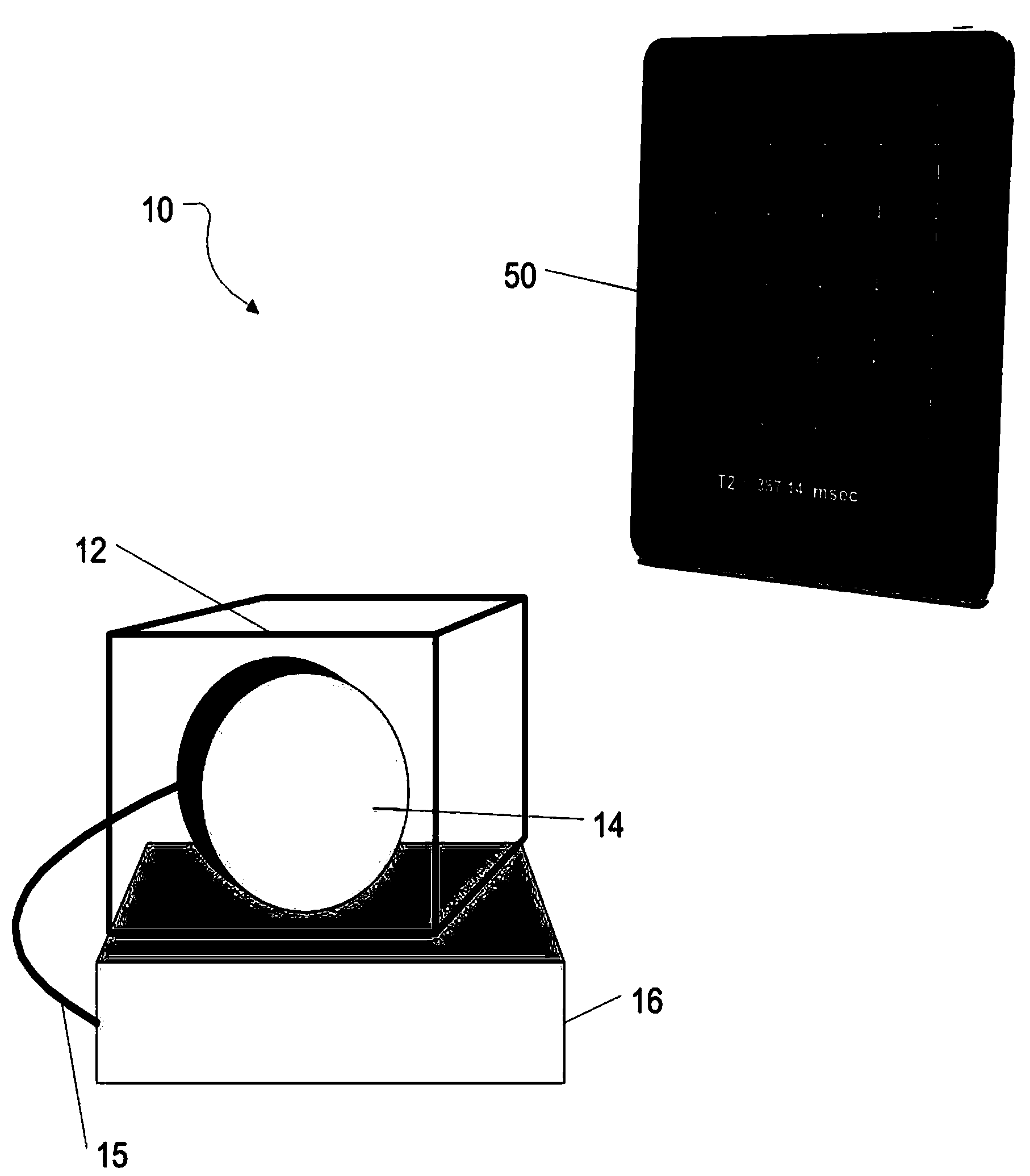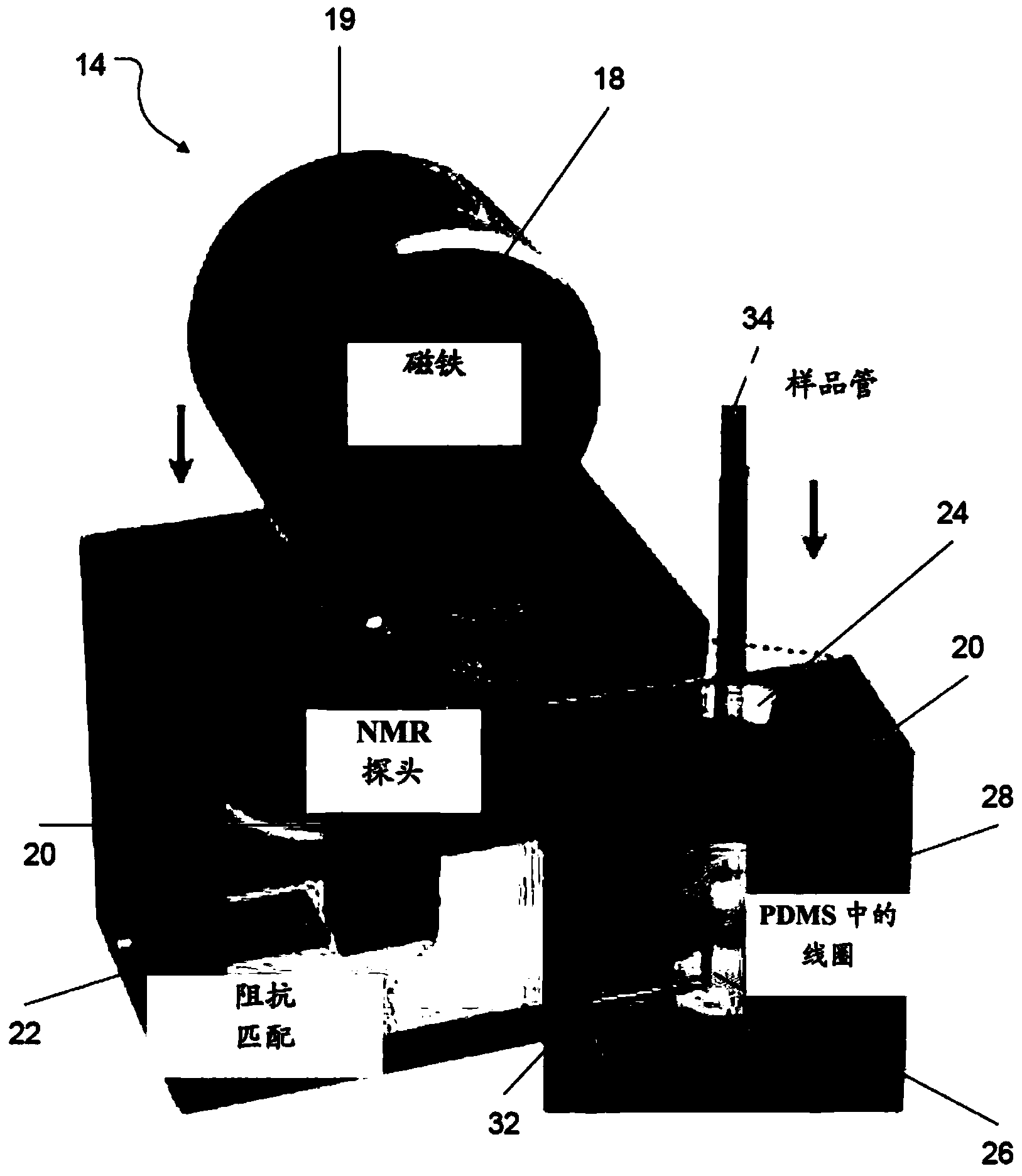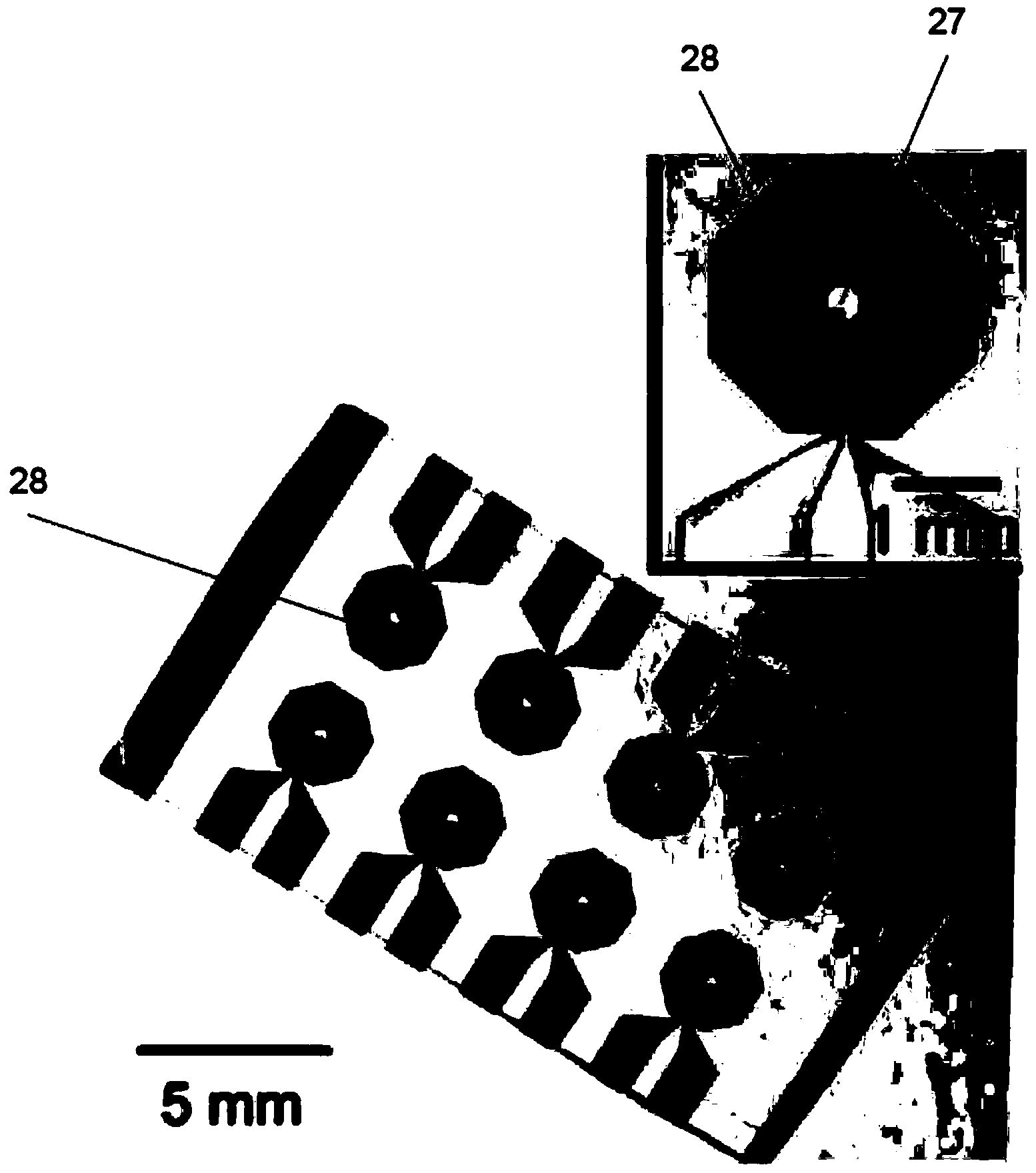Detection of targets using magnetic resonance
A magnetic resonance and nuclear magnetic resonance technology, which is applied in the fields of magnetic resonance measurement, magnetic variable measurement, magnetic performance measurement, etc., can solve the problems of increasing the cost and size of the DMR system and unreliable measurement results, so as to alleviate the huge burden and accurately diagnose Effect
- Summary
- Abstract
- Description
- Claims
- Application Information
AI Technical Summary
Problems solved by technology
Method used
Image
Examples
Embodiment 1
[0124] Example 1: Evaluation of DMR temperature change compensation
[0125] The ability of the DMR system to compensate temperature changes was evaluated through experiments. Test samples were prepared by adding magnetic nanoparticles (cross-linked iron oxide particles aminated to provide primary amine ligands (CLIO-NH2)) in phosphate buffered saline (PBS). It should be noted that the CLIO particles of this ferrite core (approximately 7 nm in diameter) were coated with a layer of 10 kDa dextran, which was cross-linked with epichlorohydrin to stabilize the coated and subsequently aminated to provide primary amine ligands (CLIO-NH 2 ). The hydraulic diameter of CLIO measured by dynamic light scattering (Zetasizer 1000HS laser particle sizer, Malvern Instruments) of the samples thus prepared was 38 nm.
[0126] Samples are added to sample tubes and loaded onto the DMR system. We used the following CPMG pulse sequence to measure T 2 : For short T 2 (less than 300 millisec...
Embodiment 2
[0130] Example 2: DMR System Benchmarking
[0131] To verify the accuracy of the system, the performance of the new DMR system was compared with another large benchtop NMR relaxation meter. A benchtop NMR relaxation instrument (Bruker's minispec mq20) was run at an external magnetic field of 0.47 T under similar conditions as the new DMR system. As discussed in Example 1, we prepared samples containing different amounts of CLIO. Using the same pulse sequence parameters described in Example 1 above, the longitudinal T of magnetic nanoparticles was measured using reverse recovery and CPMG pulse sequences, respectively. 1 and the transverse relaxation time T 2 . By recording the relaxation time, the longitudinal r is calculated 1 and r 2 relaxation rate, where the relaxation rate is magnetic particle-induced T 1 and T 2 The capacity to change is not equal to the reciprocal of the corresponding relaxation time. Figure 10 and Figure 11 are graphs showing the measured l...
Embodiment 3
[0133] Example 3: Avidin Detection
[0134] To demonstrate the biological application of the new DMR system for the rapid and sensitive diagnosis of small molecule disease markers, we validated the avidin interaction. We used biotinylated CLIO (CLIO-biotin) to detect avidin. To demonstrate CLIO targeting specificity, we modified the particle surface with an affinity ligand. To make CLIO-NH 2 For biotinylation, we dissolved 2 mg of sulfosuccinimidyl-6-(nicotinamide) hexanoate (sulfo-NHS-LC-biotin) with 0.5 mg in 1.25 ml of PBS solution (pH 7.2) CLIO-NH 2 Mix and keep at room temperature for 3 hours, then use membrane filtration (Amicon with a molecular weight of 30,000, Millipore Company), and then use Sephadex G-50 (GE Healthcare Company, with PBS (pH 7.2) as the eluent buffer solution) to purify biotinylated CLIO. Concentration between 800nM [A V ] to 2nM [A V ] Dilutions are made in a logarithmically increasing manner using stock solution concentrations of 1 mg / ml [...
PUM
 Login to View More
Login to View More Abstract
Description
Claims
Application Information
 Login to View More
Login to View More - R&D
- Intellectual Property
- Life Sciences
- Materials
- Tech Scout
- Unparalleled Data Quality
- Higher Quality Content
- 60% Fewer Hallucinations
Browse by: Latest US Patents, China's latest patents, Technical Efficacy Thesaurus, Application Domain, Technology Topic, Popular Technical Reports.
© 2025 PatSnap. All rights reserved.Legal|Privacy policy|Modern Slavery Act Transparency Statement|Sitemap|About US| Contact US: help@patsnap.com



